Née en 1977 à Kobe, Japon
Vente Christie's Paris, succès record pour les ventes de photographies Exposition About Face Exposition « Drone : l’image automatisée » : le thème du mois de la photo à Montréal Exposition Inspiration Photomaton au Musée de l'Elysée Exposition Tokyo photo 2009 Japan's first art fair dedicated to still photography Exposition Case #1 - Lost and Found Exposition Female Trouble The camera as mirror and stage of female projection Modifier l'image
 Paris | 16 novembre 2013
Succés pour les ventes de photographie : €4.609.550
Photographies : €2.982.300
Photographies contemporaines : €1.163.475
Agathe Gaillard : €463.775
4 Records du Monde ont été atteints
Paris – Avec €4,6M les résultats des trois ventes de photographies démontrent que le marché reste très solide. Les collectionneurs du monde entier se sont manifestés pour enchérir sur les pièces d’exception à l’instar du groupe exceptionnel de 27 tirages réalisé par l’artiste Hiroshi Sugimoto vendu €481.500. Commanditée par le Guggenheim Berlin, Sugimoto entreprend à partir de 1999, une série de photographies au Musée Ma...
Paris | 16 novembre 2013
Succés pour les ventes de photographie : €4.609.550
Photographies : €2.982.300
Photographies contemporaines : €1.163.475
Agathe Gaillard : €463.775
4 Records du Monde ont été atteints
Paris – Avec €4,6M les résultats des trois ventes de photographies démontrent que le marché reste très solide. Les collectionneurs du monde entier se sont manifestés pour enchérir sur les pièces d’exception à l’instar du groupe exceptionnel de 27 tirages réalisé par l’artiste Hiroshi Sugimoto vendu €481.500. Commanditée par le Guggenheim Berlin, Sugimoto entreprend à partir de 1999, une série de photographies au Musée Ma...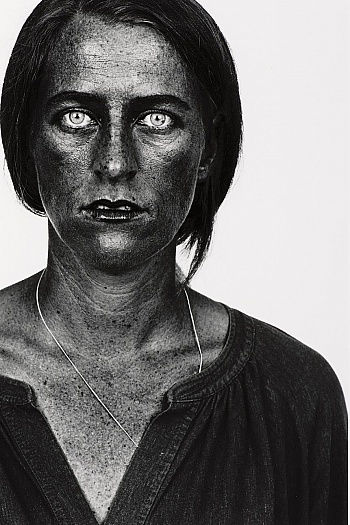 This exhibition will explore the breadth and global diversity of contemporary photographic portraiture since 2000, highlighting recent acquisitions to the museum's permanent collection.
About Face will include works by twenty-nine artists from the United States, England, Canada, France, Germany, Russia, Japan, Iran and South Africa. Though each of these photographers approaches portrait-making differently, certain thematic threads resonate throughout the show, including questions of racial, cultural, ethnic, class and gender identity; the relationship between individuals and typologies; the way photographic processes themselves inform meaning; the relevance of historical precedents to contemporary practice; and the impact of media stereotypes on self-presentation. Considered collectively, the works in About Fa...
This exhibition will explore the breadth and global diversity of contemporary photographic portraiture since 2000, highlighting recent acquisitions to the museum's permanent collection.
About Face will include works by twenty-nine artists from the United States, England, Canada, France, Germany, Russia, Japan, Iran and South Africa. Though each of these photographers approaches portrait-making differently, certain thematic threads resonate throughout the show, including questions of racial, cultural, ethnic, class and gender identity; the relationship between individuals and typologies; the way photographic processes themselves inform meaning; the relevance of historical precedents to contemporary practice; and the impact of media stereotypes on self-presentation. Considered collectively, the works in About Fa...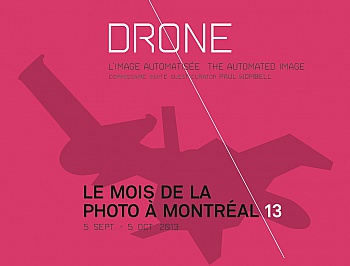 À l’occasion de sa 13e édition, Le Mois de la Photo à Montréal a invité Paul Wombell, commissaire britannique de renom, à proposer une programmation audacieuse autour du thème "Drone : l’image automatisée". Du 5 septembre au 5 octobre 2013, l’événement en mettra plein la vue avec 25 expositions déployées sur 14 sites à Montréal.
Les visiteurs découvriront les œuvres d’artistes locaux, nationaux et internationaux parmi lesquelles plusieurs ont été spécialement conçues pour cette édition ou seront exposées pour la première fois au Canada. Les artistes proposent ici d’explorer la relation en pleine mutation entre le corps et la technologie, en insistant sur les fonctions automatiques et l’intelligence de l’appareil p...
À l’occasion de sa 13e édition, Le Mois de la Photo à Montréal a invité Paul Wombell, commissaire britannique de renom, à proposer une programmation audacieuse autour du thème "Drone : l’image automatisée". Du 5 septembre au 5 octobre 2013, l’événement en mettra plein la vue avec 25 expositions déployées sur 14 sites à Montréal.
Les visiteurs découvriront les œuvres d’artistes locaux, nationaux et internationaux parmi lesquelles plusieurs ont été spécialement conçues pour cette édition ou seront exposées pour la première fois au Canada. Les artistes proposent ici d’explorer la relation en pleine mutation entre le corps et la technologie, en insistant sur les fonctions automatiques et l’intelligence de l’appareil p... Lorsque les premières cabines de photomaton furent installées à Paris en 1928, les surréalistes en firent un usage intensif et compulsif. En quelques minutes, et pour une somme modique, la machine leur offrait, dans le domaine du portrait, une expérience similaire à celle de l’écriture automatique. Depuis, des générations d’artistes ont été fascinées par le principe du photomaton. De Andy Warhol à Arnulf Rainer, en passant par Thomas Ruff, Cindy Sherman, ou Gillian Wearing, ils sont nombreux à s’être emparé du photomaton pour jouer avec leur identité, raconter des histoires, ou faire des mondes.
Derrière le rideau - L’Esthétique Photomaton, une création...
Lorsque les premières cabines de photomaton furent installées à Paris en 1928, les surréalistes en firent un usage intensif et compulsif. En quelques minutes, et pour une somme modique, la machine leur offrait, dans le domaine du portrait, une expérience similaire à celle de l’écriture automatique. Depuis, des générations d’artistes ont été fascinées par le principe du photomaton. De Andy Warhol à Arnulf Rainer, en passant par Thomas Ruff, Cindy Sherman, ou Gillian Wearing, ils sont nombreux à s’être emparé du photomaton pour jouer avec leur identité, raconter des histoires, ou faire des mondes.
Derrière le rideau - L’Esthétique Photomaton, une création...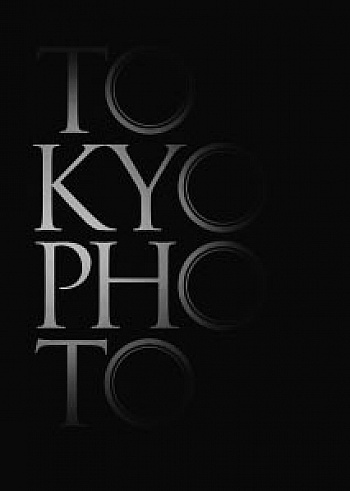 TOKYO PHOTO 2009 endeavors to be the foremost art fair of photography in Japan. The venue is located in the heart of international business and culture in Tokyo. To be held from September 4 to 6, Tokyo Photo 2009 will provide visitors with a unique opportunity to see and buy a wide range of photographic works from vintage prints to cutting-edge digitally enhanced images.
With the support of the US Embassy and in collaboration with the Museum of Photographic Arts in San Diego, Tokyo Photo will mount a special exhibition entitled Photo America. Featuring over 50 historical works spanning the 19th century to the present, Photo America will present a panoramic overview of American photographic expression. Virtually all of the works will be displayed for the first time in Japan.
PROGRAMMING
Lectures and seminars will...
TOKYO PHOTO 2009 endeavors to be the foremost art fair of photography in Japan. The venue is located in the heart of international business and culture in Tokyo. To be held from September 4 to 6, Tokyo Photo 2009 will provide visitors with a unique opportunity to see and buy a wide range of photographic works from vintage prints to cutting-edge digitally enhanced images.
With the support of the US Embassy and in collaboration with the Museum of Photographic Arts in San Diego, Tokyo Photo will mount a special exhibition entitled Photo America. Featuring over 50 historical works spanning the 19th century to the present, Photo America will present a panoramic overview of American photographic expression. Virtually all of the works will be displayed for the first time in Japan.
PROGRAMMING
Lectures and seminars will...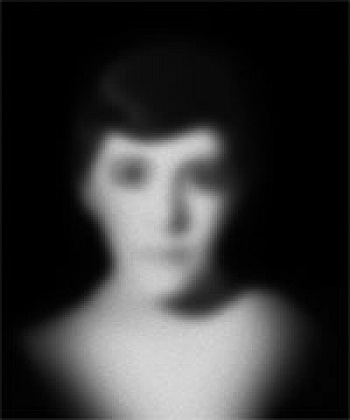 Opening Case #1: Friday, May 29, at 5:00 p.m. in the Noorderlicht Photogallery (basement), by Gerben Bakker, curator of the exhibition
The exhibitions Lost and Found and No ID together form the first initiative of the Noorderlicht Photolab, created in the slipstream of the regular programming. The dynamic trial presentations in Photolab offer all the space needed for the development and realisation of fresh new ideas in the field of photography. These can focus on photography as a medium, as a form of presentation, as a narrative force, or as a form of social critique. Lost and Found and No ID represent two different approaches to the theme of photography and personal identity. The photograph of the human face is central to both presentations.
Case # 1 - Lost and Found
In the first edition, Lost and Found, Photola...
Opening Case #1: Friday, May 29, at 5:00 p.m. in the Noorderlicht Photogallery (basement), by Gerben Bakker, curator of the exhibition
The exhibitions Lost and Found and No ID together form the first initiative of the Noorderlicht Photolab, created in the slipstream of the regular programming. The dynamic trial presentations in Photolab offer all the space needed for the development and realisation of fresh new ideas in the field of photography. These can focus on photography as a medium, as a form of presentation, as a narrative force, or as a form of social critique. Lost and Found and No ID represent two different approaches to the theme of photography and personal identity. The photograph of the human face is central to both presentations.
Case # 1 - Lost and Found
In the first edition, Lost and Found, Photola...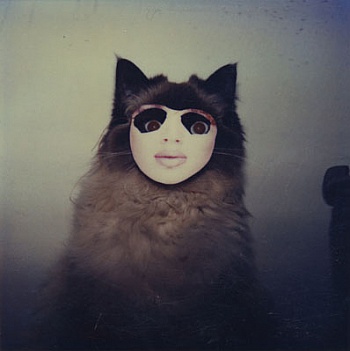 Since the invention of photography more than 170 years ago it has been largely women who have used this technical medium to project themselves through role playing and masquerading. As well as the experimental urge to constantly recreate ones ego, the camera has also served as a means of calling into question clichés of female representation. Playing with the image of the eternally feminine was and remains a discourse with gender identity, its social and political definitions and reaching beyond them.
The exhibition focuses on contemporary women artists such as Cindy Sherman, Sarah Lucas, Monica Bonvicini and Pipilotti Rist, who with the aid of photography and video art investigate the female image. The artists explore the question of what image patterns the media age employs for portraying femininity and how t...
Since the invention of photography more than 170 years ago it has been largely women who have used this technical medium to project themselves through role playing and masquerading. As well as the experimental urge to constantly recreate ones ego, the camera has also served as a means of calling into question clichés of female representation. Playing with the image of the eternally feminine was and remains a discourse with gender identity, its social and political definitions and reaching beyond them.
The exhibition focuses on contemporary women artists such as Cindy Sherman, Sarah Lucas, Monica Bonvicini and Pipilotti Rist, who with the aid of photography and video art investigate the female image. The artists explore the question of what image patterns the media age employs for portraying femininity and how t...